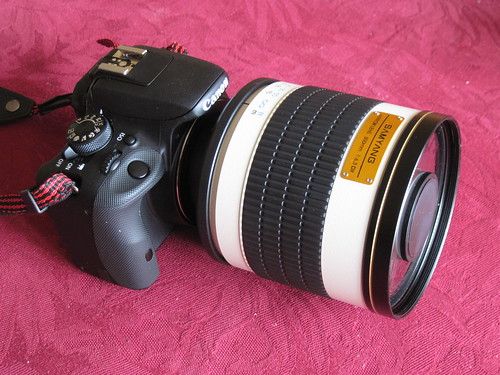
Three years ago I bought a Samyang 500mm ƒ/6.3 mirror lens. (What appears to be the same lens is sold under several other brand names. Mine is clearly labelled "made in Korea" though.) It was sold as "ex demo" but I can't see any sign it wasn't brand new. It comes with a screw-on lens hood not shown in the above photo. The lens has a T-thread (M42x0.75) mount, so I've used a T-thread to M42x1 adapter and an M42x1 to EOS adapter (which I already had) to attach it to my Canon 100D. The EOS adapter has a "focus chip" - this tells the camera it's got a Canon 50mm ƒ/1.8 lens attached and allows the focus confirm system to work on well lit subjects. ƒ/6.3 is about the smallest aperture the EOS 100D's focus system can cope with.
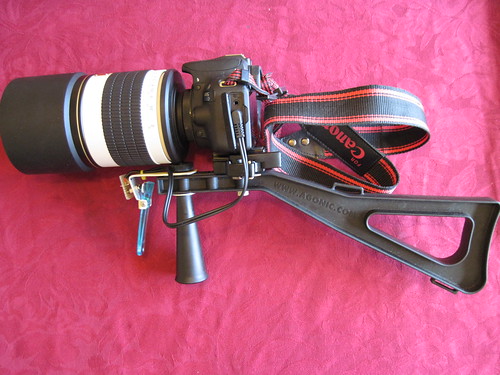
In another blog post I described how I've mounted the camera plus lens on a shoulder brace. I've recently been having some fun using this set up to photograph some birds in my garden. All the following pictures are taken through a double glazed window, which is sub optimal, so better pictures should be possible.
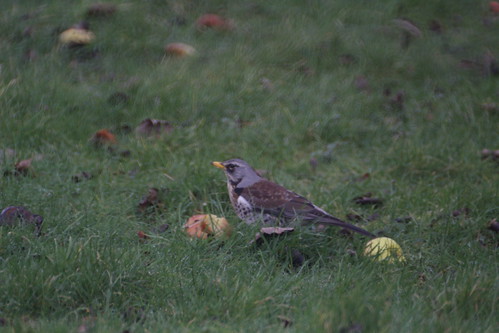
This first picture is of a fieldfare (Turdus pilaris). This unprocessed picture is a bit dull, and if you zoom in (click on the picture to see it on Flickr, then click on it again to zoom in) you can see it's really not very sharp.
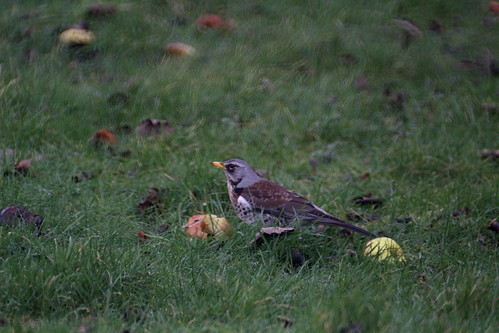
I'm no expert in processing photographs but I thought I'd have a go using GIMP, an open source programme available on many operating systems. All I've done here is to boost the contrast a little, adjust the brightness, and use an "unsharp mask" filter to make it a bit less soft. I think it's a significant improvement.
On this more recent picture (a green woodpecker (Picus viridis)) I actually managed to get the bird in focus. I've done similar processing and am pleased with the glint in the eye and the detail in the feathers.
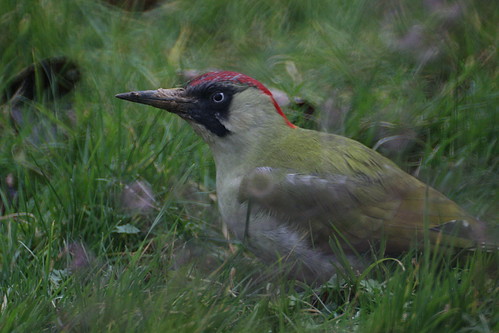
This picture also shows one of the optical defects of mirror lenses, the doughnut shapes formed around out of focus highlights. The ethereal ring shape in front of the bird's shoulder is caused by a berry on a plant stem in the foreground. Some people find this sort of aberration very annoying. I don't think I mind it too much.
The most severe problem with this particular lens design is the difficulty in focusing. Its focal distance goes from 2m to infinity (and beyond) in a quarter turn of the lens body. If they'd only made this nearer a full turn it would be much easier to use. Some people have remedied this by attaching long levers or gearing systems. I've yet to try anything like this.